Damon Baehrel’s basement restaurant opened in 1989, located in woodland near a little place called Earlton, 135 miles north of Manhattan, 23 miles south of Albany. It is notorious for its waiting list, currently running at ten years. That is not a typo: they have bookings running out to 2025 at present. The restaurant has been known to get 10,000 inquiries in a week, and all this with no PR company and no publicity, just word of mouth; there is not even a telephone number for the restaurant. This year alone Damon Baehrel has had guests from 65 different countries.
The self-taught Mr Baehrel works on his own in the kitchen, serving a maximum of twenty diners himself. The cooking makes heavy use of produce grown on the property and a nearby farm that he owns. Essentially everything on the plate, with the exception of the seafood, is from his 12 acre property plus a farm a few miles from the restaurant that he owns. He makes his own flour from ingredients like clover and beech nuts, pine tree bark and acorns, and oils from acorns and other ingredients. the glass of "water" on the table was actually sycamore sap. He uses no butter, cream or sugar, but instead uses violet stems for a thickening effect, and pine needles to cure meat or seafood. Cooking is over wood and hot stones from the property. Even the salt used in the kitchen is made from Maine seawater. Mr Baehrel calls this ultra local cuisine "Native harvest ", and was doing this long before foraging became fashionable in trendy restaurants.
Guests sit at an attractive cedar wood table, with the host bringing out the dishes from the kitchen next to the dining room; there is also a separate building upstairs that is used for food preparation. At the far end of the dining room is a display table with many of the local ingredients gathered from the property. The menu format is a lengthy tasting menu, usually taking up to five hours. However tonight he produced some extra courses in addition to the standard menu. The notes that follow are very detailed, and I’d like to thank my fellow diners Mijune Pak and the blogger Fine Dining Explorer for sharing their own notes with me to ensure that the descriptions are accurate.
The meal began with a crisp made from cedar flour, hickory nut oil and duck egg white powder topped with Blue-foot chicken (a Canadian hybrid inspired by Poulet Bresse) cured not with salt but with pine needle juice, powder and pulp. The cedar flour shavings are soaked/cured every four to six weeks until any trace of bitterness from the cedar is removed, and the thr process actually takes over a year of elapsed time to make. The crisp was delicate and the chicken had good flavour (16/20).
A spoon contained Scottish salmon soaked in concentrated sycamore sap for 43 days. To serve it is warmed up to room temperature, and topped with a crisp of baked wild black burdock root, a paste of unripened green strawberries for acidity, as well as pickerelweed seeds, homemeade green strawberry vinegar and fresh pressed grape seed oil, and finally a dust of wild marsh marigolds. This was very pleasant, with enough acidity to cut through the natural fattiness of the salmon (16/20).
Next was something that took 18 months elapsed time to make. This pine flower cracker was made with butternut oil, water and sea salt, topped with wild oyster mushrooms chopped and cooked with butternut oil on a smouldering butternut wood plank. This was very enjoyable, the crisp having delicate texture and the mushrooms possessing a surprising depth of flavour for oyster mushrooms, the wood adding a hint of smokiness (17/20).
The first of a series of palate cleansers that appeared during the meal was sugarless ice made using stevia (a plant that is two hundred times sweeter than sugar) that had been simmered into a tea, then thickened into a syrup with wild violet leaves and stems. This was infused with tiny wild carrots and frozen by hand in a bowl, so essentially was a carrot slush. A pair of powders came with this, one a green powder that turned out to be lichen that had been soaked in water and baked, whch tasted rather like onion. A pink powder turned out to be pickled baby maple leaf powder, which had a mild spicy flavour. The ice cream had very pure carrot flavour, and the process of freezing by hand resulted in a pleasing texture that is different from the perfectly smooth version produced by an ice cream machine, but was no less pleasant (18/20).
Next was a prettily presented plate of homemade cheeses (some of the forty cheeses made here) and pine-needle cured meats. My favourite was a blue cheese made from cow milk, offered with wild partridge berry drizzle. Next to it was a cheese made mostly from cow milk with a little sheep milk mixed in, with dried carrot top “hay”, encrusted with dried cantaloupe seeds and served with pickled peach drizzle. Next to this was a cheese made from a mix of sheep and goat milk curdled with fresh stinging nettles, and served with tomato raisin and pickled wild mulberry. Finally there was a triangle of cow and sheep milk cheese made using fermented cauliflower juice to curdle it. This was accompanied by a drizzle of pickled knotweed (wild rhubarb). The sequence of meats, cured with pine needle and spruce, comprised a guinea hen spiced sausage, China brown goose with black Krim tomato powder, duck ham cured in pine needles, pine and spruce cured venison, Berkshire pork leg that had been cured for 28 months, and Icelandic lamb (a European breed noted for its lean meat) cured for 19 months. Ultimately this was a plate of cheese and ham so is tricky to score, but the cheeses and hams were certainly very good and the amount of effort that had gone into that single plate of food was remarkable.
Next was a layered composition of wild honey mushrooms and sliced daylily tubers (rather like potatoes), roasted on cherry wood with hickory nut oil and wild fennel powder, served with a pair of sauces. There was milkweed pod cooked in maple sap and “burnt“ corn sauce prepared by plunging heirloom husk of sweet corn into hot wood embers to burn and melt the kernels before pulversing between two stones. There was also a dusting of daylily shoot powder. This was a lovely dish, the mushroom having excellent and unusual flavour, with almost a hint of sweetness, the cooking precise and the sauces working harmoniously with the mushrooms (18/20).
Next a little casserole dish contained within it a turkey from a heritage breed called “Slate blue“. The leg meat had been brined in concentrated beech wood sap for 15 days before being cooked in beech wood sap for six hours; the meat is then “preserved” in the cooking sap for 2-3 weeks. This was paired with cattail stem sauce, emulsified rutabaga stock and cattail stem powder, and there was also a crunchy willow inner bark that had been harvested, sliced, dried and baked, with a seasoning of hickory shag bark "pepper". Turkey is a notoriously difficult bird to work with, but here the meat avoided the dryness that so often afflicts it, and had good flavour (easily 16/20).
At this point a choice of two breads was served, both made from scratch and baked on bluestone slabs, served on black walnut log “plates”. Both breads were made from homemade flours and even the yeast used came from local wild grapes on the property. One of the breads contained wild clover, dandelion and cattail flour and was crusted with wild onion powder, beechnut powder, flax, caraway and marjoram powder with rendered sea salt. A flatbread was made using acorn, beech nut and goldenrod flour, topped with chopped wild onions, hand-pressed grape seed oil and garlic scape powder. Two butters were also made from scratch, one aged for over three months made from cow milk and dusted with wild angelica powder, the other sheep milk cream dusted with wild Lambs Quarters seeds powder. A bottle of hand-pressed grape seed oil was flavoured with cedar berries, spruce and pine shoots. The breads had very good texture and flavour (17/20).
Another palate cleanser followed, a slush of stevia tea and wild sweet clover flowers thickened with wild violet leaves and stems, again frozen by hand and dusted with sour moss, violet leaf and stevia bud. This tasted lovely and was suitably refreshing (17/20). This signalled the beginning of the next sequence of dishes, this time using seafood. Mr Baerhel uses a fish supplier who delivers daily that he has been working with since the restaurant opened.
The first dish was mahogany clams from Nova Scotia warmed in a hemlock needle oil, topped with a sauce of wild ostrich ferns and crunchy slices of oven-dried spiny thistle stems. Clams can often be chewy, but these were clearly very fresh, alive when delivered, and were excellent, the fern sauce working well with the shellfish (16/20).
This was followed by Nova Scotia rock crabs, again alive when delivered that morning. These were prepared with acorn oil (which was roasted with wild oak acorns to a achieve a toasty butter-like colour and flavour) wild garlic scape juice, toasted chopped white oak acorns, wild lovage juice and turnip water. The warm crab came with chopped wild barberry root, and a sauce made from wild chicory and dandelion roots cooked in ironwood broth, along with slivers of dried cured monkfish liver. The crab had lovely freshness and the monkfish liver worked really well with it, not too dominant but instead adding a layer of flavour complexity (18/20).
This as followed by lobster from Nova Scotia, again delivered live that day. This was cooked by warming on a hot stone with lemon verbena and pressed grape seed oil, served with golden rod sauce made with rutabaga starch. On the side was yellow fin tuna salami with a dust of baked birch leaf ashes. The lobster was tender and had a pleasing hint of sweetness (17/20).
The final seafood course featured Newfoundland spot prawns cooked in concentrated cherry sap, with toasted chopped and toasted lemon cucumber seeds to provide crunch, slivers of spicy cured swordfish ham and wild lavender verbena. The prawns were of stunning quality, beautifully sweet and precisely cooked, the hint of lemon an excellent flavour pairing (19/20).
Another palate cleanser preceded the sequence of meat courses. This one was prepared using native Stag’s Horn sumac sweetened with an unripened wild grape syrup made from seven different types of wild grapes found on the property, the juice thickened with wild violet leaves and stems. Most of the stems used were sumac, the rest stevia, with flowers along with June berry powder and beech bud powder (16/20).
The first meat course was Tamworth pork cured with pine needle pulp, juice and powder and then cooked for nine hours in concentrated hickory sap. The shoulder, neck and shanks are compressed over a two week period, held together with pink collagen and then poached in hickory sap. This came with slices of Kachoba squash (Japanese pumpkin) jerky and Queen Anne’s Lace (wild carrot) powder, along with a sauce of bull thistle roots. The meat was tender and had plenty of flavour, the wild carrot a good foil for the meat (17/20).
Next was heritage goat in the form of sausage of goat and wild apple smoked over witch hazel bud seed clusters. The leg of goat was cooked on a hot stone and served with three kinds of vintage potatoes with vinegar to ferment them. The potatoes used were a two-year-old purple potato, two and a half year old Adirondack blue potatoes fermented in onion vinegar, chard root vinegar and aged tomato vinegar. There were also 18-month-old gold fingerling sweet potatoes, some acidity in the dish being provided by a little apple bark pepper. The potatoes had excellent flavour and the goat was tender (17/20).
This was followed by teal duck with sumac berries brined in sumac powder for 12 days, then cooked for 7 hours in grape seed oil and beech wood sap, roasted at low temperature. This came with kohlrabi cooked in a homemade “saffron“ broth made from smoked wild bergamot flowers, and a sauce made from wild brassica roots cooked in the soil they were with, giving a smoky briny effect. Wild crispy baked sunflower roots completed the dish. The teal avoided any of the rubberiness that can occur with ths meat, the sauce nicely lifting the flavour of the bird (17/20).
The final meat course was Angus beef, grass fed and aged for 80 days. The cut used was an unusual one, called “eye round”, which is near the sirloin. This was cooked on a warm stone covered with a glass dome until it was almost steaming, served with a paste of wood ear (birch polypore) mushrooms that had been slow cooked for 55 hours to soften. In addition there was a drizzle of fermented red cabbage sauce, wild wood nettles cooked in grape seed oil with wild sage salt, and finally corn powder and a sauce of wild turnips. The cut is one of those cheap ones that has plenty of flavour but requires a lot of cooking. The cabbage and mushrooms were a good accompaniment (16/20).
The dessert stage of the meal began with an acorn flour cone, a dish served since the restaurant was opened. The acorn flour took sixteen months to create, the acorns spending the winter in burlap sacks under the ice of a stream on the property. The cone is made from acorn flour, acorn oil, stevia powder, egg whites and wild mountain parsley essence. The filling was made from nightshade beans cooked in walnut sap before being mashed between stones,, green eggplant powder (which has a flavour reminiscent of truffle) and topped with chopped hickory nuts. The cornet was very delicate (16/20).
The first main dessert was a faux creme brûlée made with whisked whole duck eggs whipped with stevia tea syrup and blue Hubbard squash seed water. This was crusted with crystallised walnut sap sugar that was melted on a hot stone. The inside had a dash of wild cranberry. A sugarless wild elderberry slush with toasted salted pumpkin seeds and a dusting wild sarvisberry powder was also served. This was a clever and pleasing dish, reminiscent of crème brulee but quite distinctive (16/20).
Next was fermented acorn and hickory nut coffee, infused each month with a mash of white acorns, hickory nuts and stevia powder. This came with dried organic peaches and apricots, dried Lorning peach sauce, pine nuts and wild red stemmed apple mint dust. This was an original and successful dish that actually tasted like chocolate yet involved none (17/20).
Finally there were several trays of cheeses, all made from scratch here. These were served with Braeburn and Northern Spy apples, Anjou pears, Cayuga and champagne grapes, raspberries, wild sorrel leaves, baby chard and kale leaves. Bread was baked on stones and made with goldenrod flour, acorn flower and beech nut flour dusted with wild cress flower powder.
There were a dozen cheeses served in all, the cheeses were made from cow, goat and sheep milk or a mixture of the three. There was a cow milk cheese aged for seven months, a blue made from 60% cow and 40% sheep milk aged for over nine months, and another blue, this time made with sheep milk aged for over fifteen months. A cow milk cheese was curdled with fermented birch sap vinegar and aged for five months, and a sheep, cow & goat milk cheese curdled with fermented marigold vinegar and aged seven months. There was a mild cow’s milk cheese made from the whey of a newer batch of the first cheese aged for just two weeks. A cow and sheep cheese that is a more aged version of the fourth cheese from the earlier course was aged seventeen months in pine bark. A cow and sheep milk curdled with turnip top “hay” was aged twelve weeks, and a sheep milk curdled with shavings from the local fig trees was aged five months. A goat and cow milk cheese curdled with fermented dried cabbage and grape juice was aged eight months, alomg with a sheep and goat milk cheese curdled with apple vinegar aged four months. Finally there was a sheep curd cheese curdled with dried wood nettles that had been aged for three weeks.
At the last was a palate-cleansing sugarless slush of wild grapes sweetened with unripened grape syrup fillwed with a tiny cluster of wild maple seeds cooked in homemade maple sap “sugar”. This concluded the meal.
Mr Baehrel was an enthusiastic and articulate host, explaining each dish in detail and patiently answering questions. The evening was a long one, almost seven hours from start to finish, but it actually never felt as if it was dragging, the food arriving at a steady pace. The bill came to $430 (£282) a head, the food component being $350 (£229) per person; we paid corkage to be able to bring our own wine, though the cellar here has around 300 selections.
This was a fascinating experience, more dinner party than restaurant in a way, given that Mr Baehrel is the sole member of staff: he acts as forager, chef, waiter and dishwasher. Certainly his charm and enthusiasm are a key part of the experience, but it would be a mistake to assume that the intriguing story behind the cuisine is at the expense of culinary pleasure. The cooking here was impressive, the flavour balance carefully thought through, and all of the elements on the plate there for a reason. The food may not have cutting edge presentation, with no pretty edible flowers tweezered into place by a team of chefs as seems obligatory these days, but that has no effect on the flavour of the dishes. There are a few other restaurants globally like The Sportsman that are hyper-local with their produce, and some single-handed kitchens, but I have not encountered a combination of the two before. All that would not matter of the food didn’t taste any good, but here it does.
The fact that Damon Baehrel can produce food to this standard on his own using only local produce is quite remarkable. If you removed the back story and the pretty setting then of course there are individual restaurant dishes elsewhere that are comparable or better, since they are not working within the self-imposed constraints here, and kitchens generally have considerably more than one person to produce a long tasting menu. However this is not just smoke and mirrors: the dishes have a lot of flavour, the cooking is accurate and not a single dish that I tried was a dud or felt gimmicky. Overall this is a fascinating dining experience. I dread to think how long the waiting list would be if he actually tried marketing the place.



































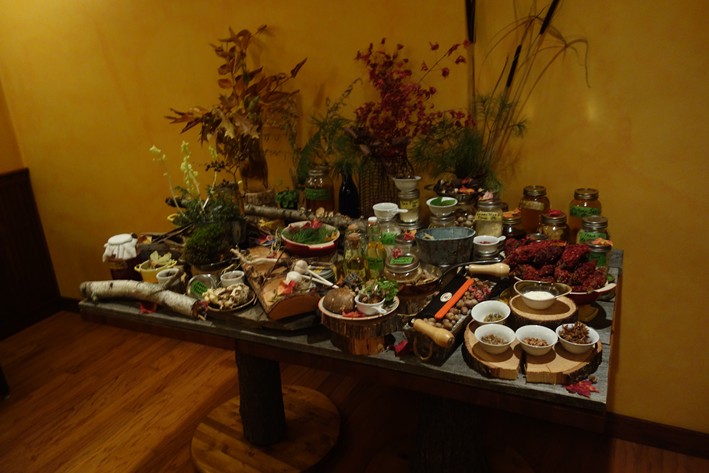

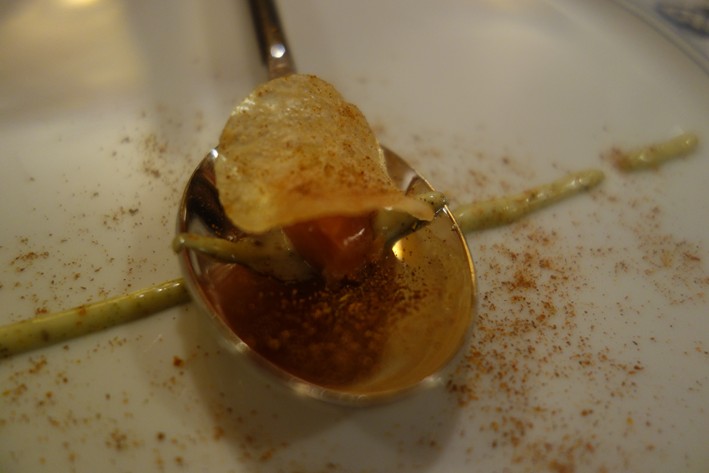



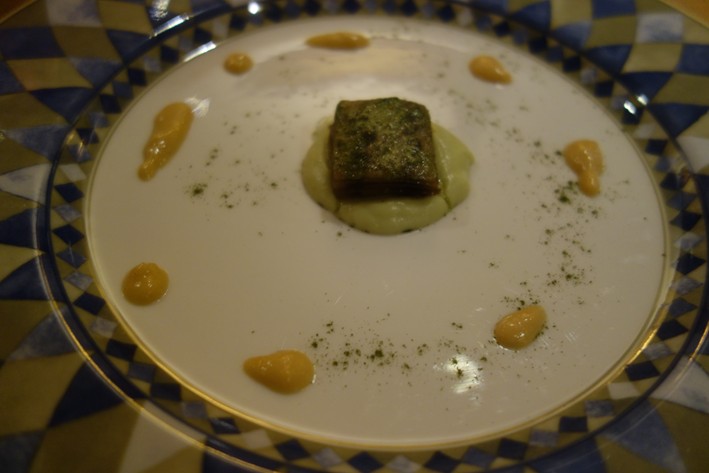
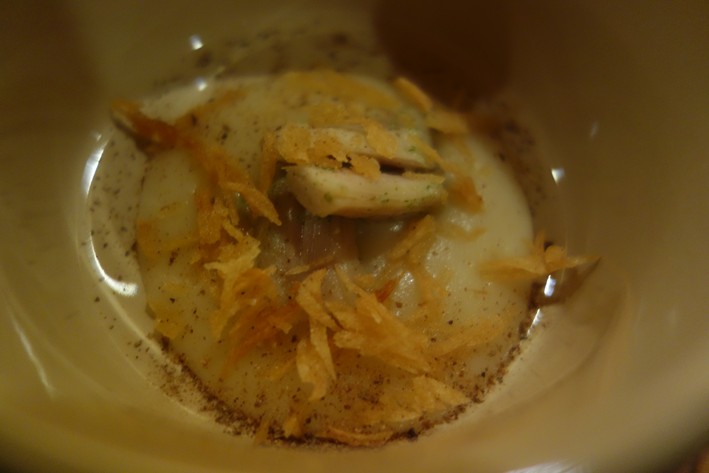

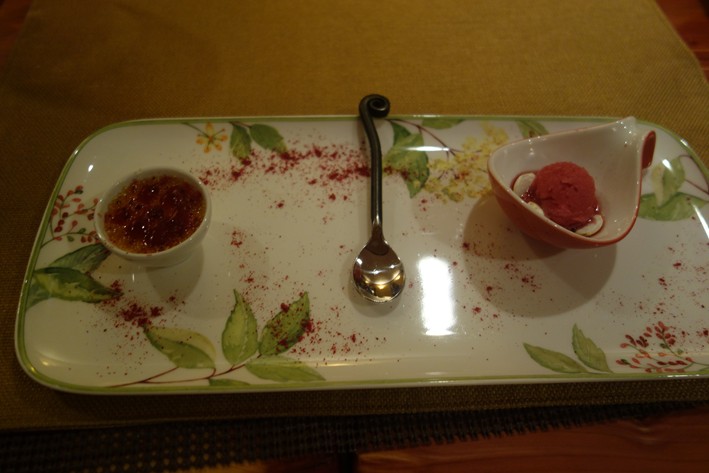
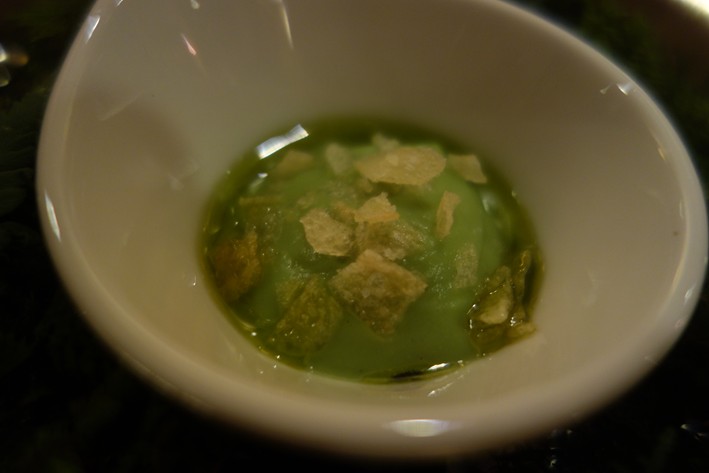
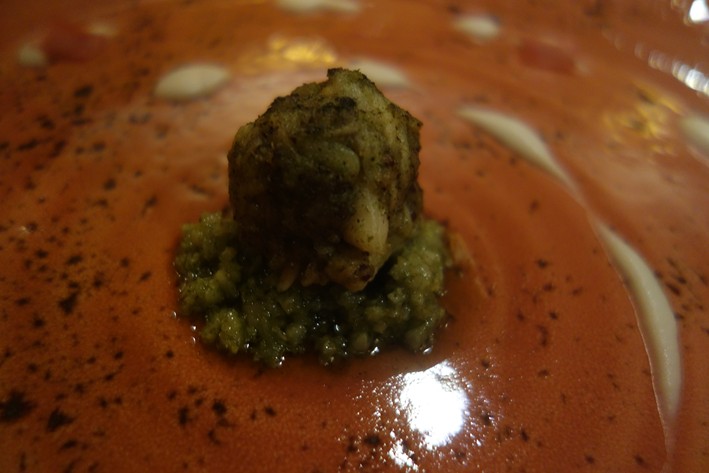

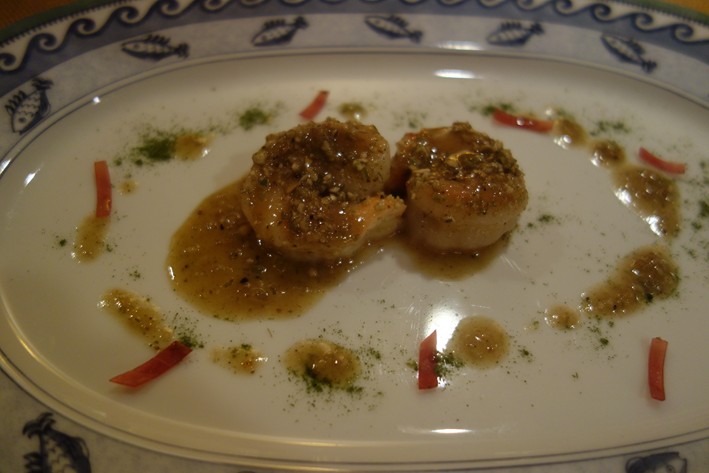


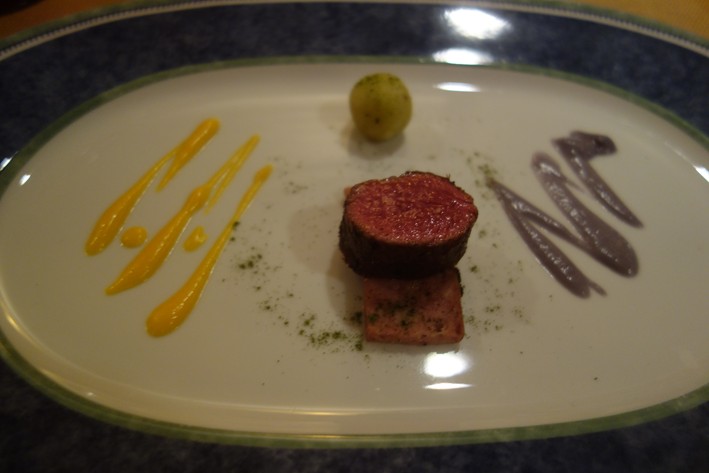
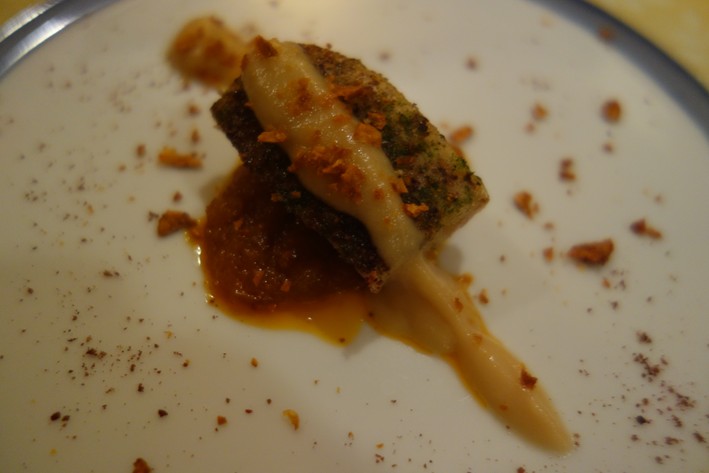
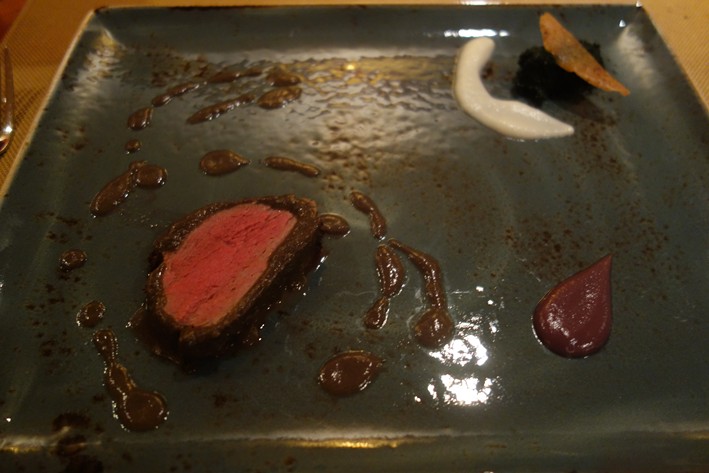
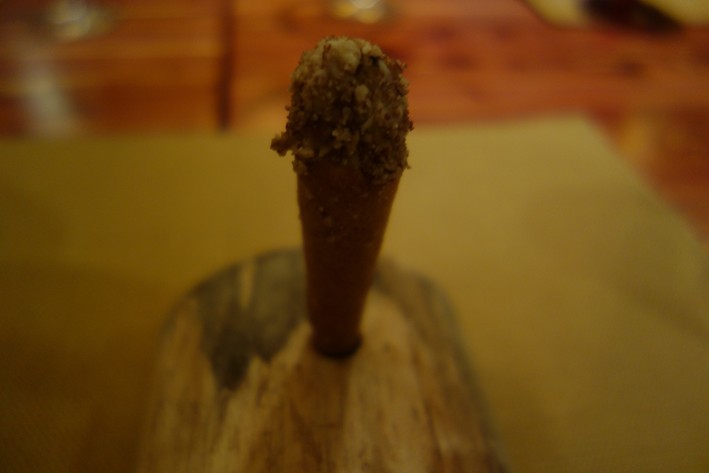
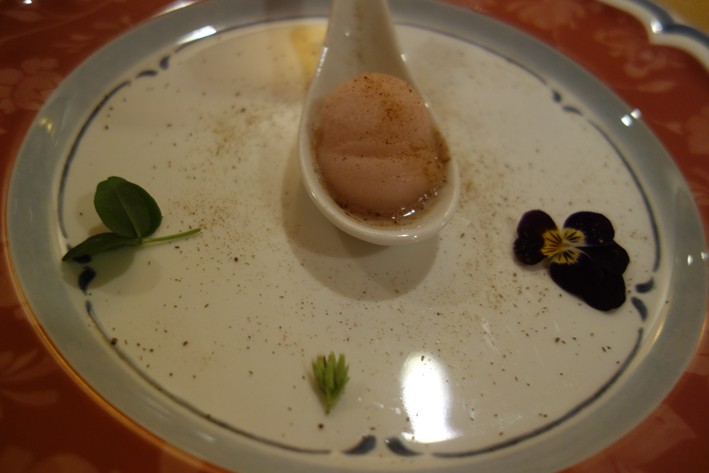
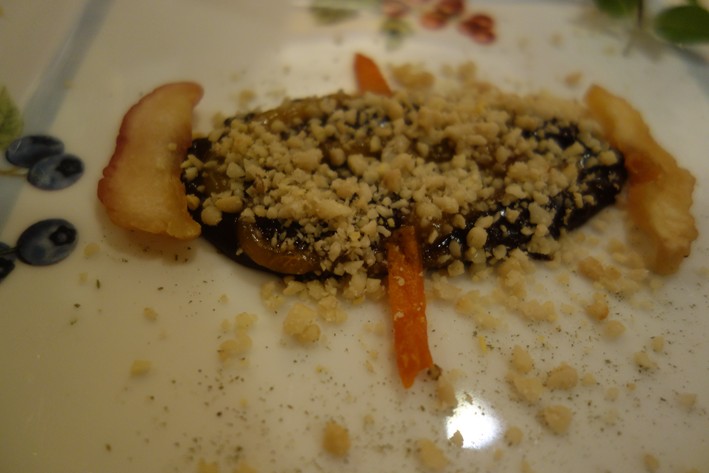
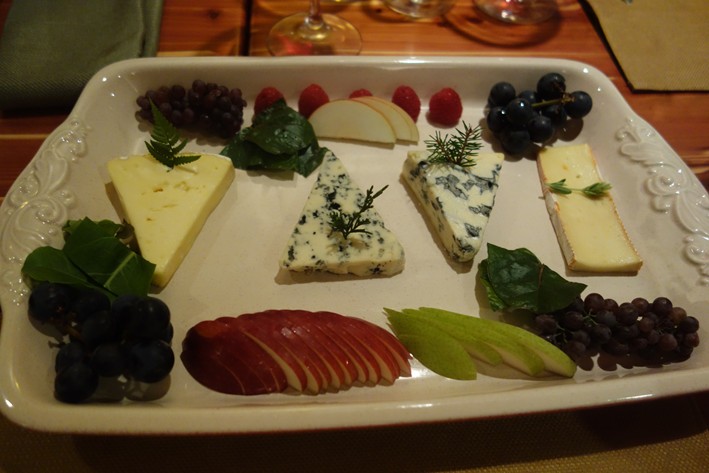


G
Great review thank you
Patrik
A very interesting review. I also read The New Yorker piece which provides additional - if a bit sceptic - insight into this operation. In the last issue of The New Yorker, there is another feature related to dining - a profile of current The New York Times food critic. http://www.newyorker.com/magazine/2016/09/12/pete-wells-the-new-york-times-restaurant-critic
Adrian Biles
See http://www.newyorker.com/magazine/2016/08/29/damon-baehrel-the-most-exclusive-restaurant-in-america?intcid=popular
jt
great review, a shame you circumvented his no cameras policy though.
ames marino
cant wait to visit
David Kirwan, Ireland
I dare say it is the lack of marketing that has helped create the long waiting list. I believe Spago flourished in the early days by not listing their phone number in the phone book.
Jeffrey merrihue
I love your reviews and defence of fine traditional cooking...but...this would be an example of where your scoring framework breaks down. Damon is a dining experience unequaled in gastronomy today: 20/20.